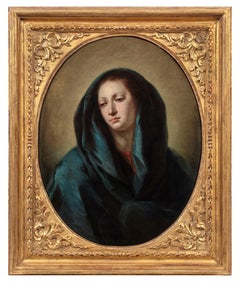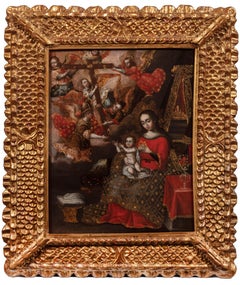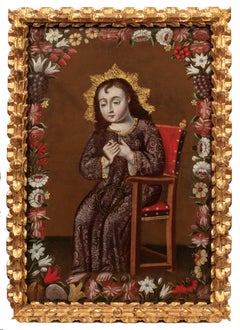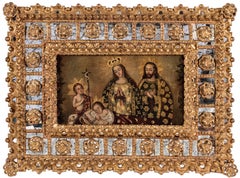Want more images or videos?
Request additional images or videos from the seller
1 of 3
Julius Caesar on Horseback1594
1594
$100,000List Price
About the Item
- Attributed to:Antonio Tempesta (1555 - 1630, Italian)
- Creation Year:1594
- Dimensions:Height: 79.5 in (201.93 cm)Width: 62 in (157.48 cm)
- Medium:
- Movement & Style:
- Period:
- Condition:
- Gallery Location:New York, NY
- Reference Number:1stDibs: LU10213350192
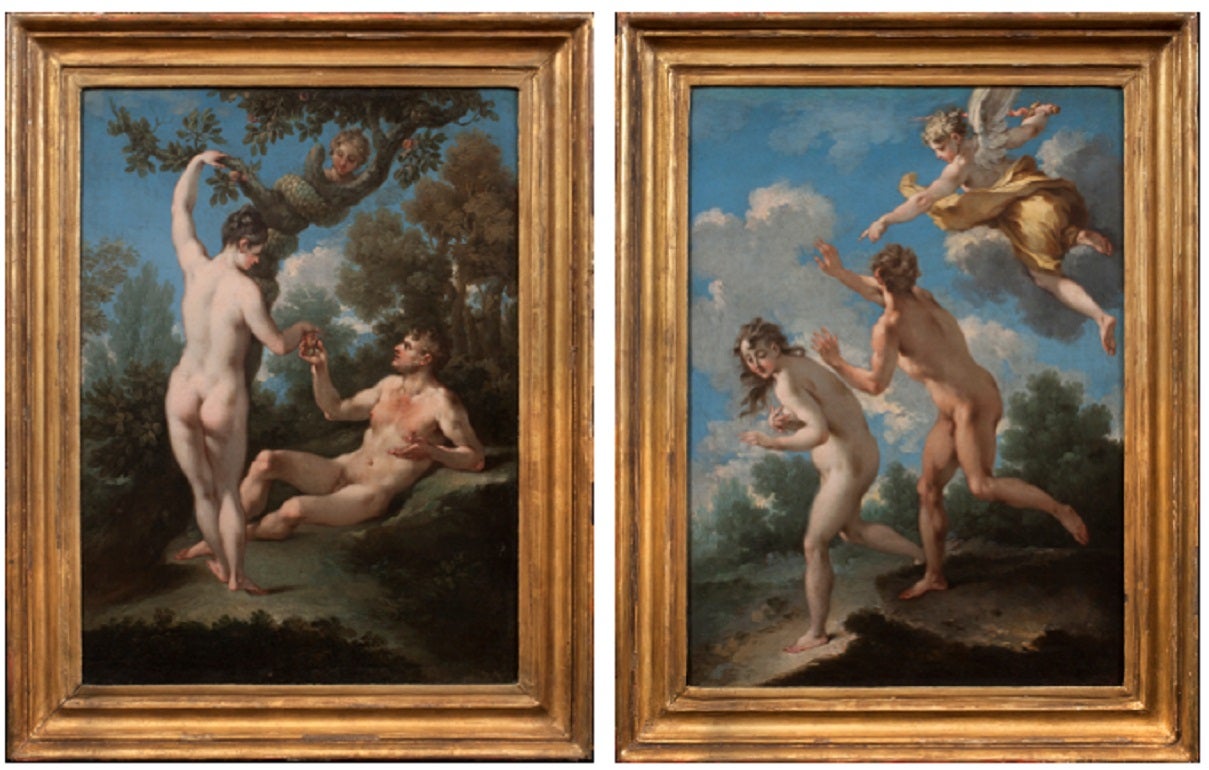
About the Seller
5.0
Recognized Seller
These prestigious sellers are industry leaders and represent the highest echelon for item quality and design.
Established in 1997
1stDibs seller since 2012
24 sales on 1stDibs
Typical response time: 7 hours
Authenticity Guarantee
In the unlikely event there’s an issue with an item’s authenticity, contact us within 1 year for a full refund. DetailsMoney-Back Guarantee
If your item is not as described, is damaged in transit, or does not arrive, contact us within 7 days for a full refund. Details24-Hour Cancellation
You have a 24-hour grace period in which to reconsider your purchase, with no questions asked.Vetted Professional Sellers
Our world-class sellers must adhere to strict standards for service and quality, maintaining the integrity of our listings.Price-Match Guarantee
If you find that a seller listed the same item for a lower price elsewhere, we’ll match it.Trusted Global Delivery
Our best-in-class carrier network provides specialized shipping options worldwide, including custom delivery.You May Also Like
17th Century Antiveduto Gramatica Magdalene Praying with a Skull Oil on Canvas
Located in Milano, Lombardia
Antiveduto Gramatica or Grammatica (Rome, Italy, 1571 – 1626)
Title: Magdalene Praying with a Skull
Medium:Oil on canvas
Dimensions: without frame 58 x 43.2 cm - with frame 85 x 72 x...
Category
17th Century Old Masters Portrait Paintings
Materials
Canvas, Oil
$79,147 Sale Price
20% Off
H 22.84 in W 17.01 in D 2.37 in
17th Century By Johann Carl Loth Saint Mark Oil on Canvas
Located in Milano, Lombardia
Johann Carl Loth (Munich, Germany, 1632 - Venice, Italy, 1698)
Title: Saint Mark
Medium: Oil on canvas
Dimensions: without frame 65 × 72 cm - with frame 82.5 x 88 cm
Expertise by Professor Dario Succi
Publications: Lo studiolo...
Category
17th Century Old Masters Figurative Paintings
Materials
Canvas, Oil
$26,319 Sale Price
20% Off
H 25.6 in W 28.35 in D 1.97 in
17th Century By Hendrick Van Somer Saint Jerome Oil on Canvas
Located in Milano, Lombardia
Hendrick van Somer o Someren o de Somer (Lokeren, Belgium, 1607 - Naples, Italy, 1656)
Title: Saint Jerome
Medium: Oil on canvas
Dimensions: without frame 91 x 72 cm - with frame 108...
Category
17th Century Old Masters Figurative Paintings
Materials
Canvas, Oil
$23,183 Sale Price
20% Off
H 35.83 in W 28.35 in D 1.97 in
17th Century By Gian Giacomo Barbelli Paradise and Purgatory Oil on Canvas
Located in Milano, Lombardia
Already been in Koelliker collection (no. inv. LK0431)
Publications:
- C. Alpini, Ritratto di Gian Giacomo Barbelli nel IV centenario della nascita, in “Insula Fulcheria”, XXXIV, ...
Category
17th Century Old Masters Figurative Paintings
Materials
Canvas, Oil
$36,865 Sale Price
20% Off
H 28.35 in W 21.66 in D 1.97 in
17th-18th Century By Louis Cretey Saint Sebastian Oil on Canvas
By Louis Cretey
Located in Milano, Lombardia
Louis Cretey (Lyon, France, 1635 - 1702)
Title: Saint Sebastian
Medium: Oil on canvas
Dimensions: with frame 91 x 75 x 5 cm - without frame 77 x 60.5 cm
With a "cassetta" frame in ...
Category
17th Century Old Masters Figurative Paintings
Materials
Canvas, Oil
$15,772 Sale Price
20% Off
H 30.32 in W 24.02 in D 1.97 in
Answer Within
Located in Ibadan, Oyo
Painting
Ships in a well-protected tube from Nigeria
This work is unique, this is not a print or other type of copy.
Accompanied by a Certificate of Authenticity (Issued by the Gallery)
Category
21st Century and Contemporary Old Masters Portrait Paintings
Materials
Canvas, Oil
HUGE 17thC ITALIAN OLD MASTER OIL PAINTING - KING & COURT FIGURES ROMAN BUILDING
Located in Cirencester, Gloucestershire
Artist/ School: Italian School, 17th century.
Title: A King and Queen before court figures, amidst a classical landscape with Roman columns.
Medium: oil painting on canvas, framed
...
Category
17th Century Old Masters Figurative Paintings
Materials
Canvas, Oil
$8,572 Sale Price
30% Off
H 45 in W 60 in D 2 in
19th Century English Antique, Two Country farmers drinking beer in a landscape
By George Morland
Located in Woodbury, CT
Attributed to George Morland.
19th Century English Antique, Two Country farmers drinking beer in a landscape.
Wonderful early 19th-century original oil on canvas.
A classic 'Morland' composition as the painter was a big fan of English Pub scenes...
Category
Early 1800s Old Masters Figurative Paintings
Materials
Canvas, Oil
$2,765 Sale Price
30% Off
Free Shipping
H 20 in W 16 in
Early 1800's English Oil Painting Figure in Rural Woodland Landscape, original
By circle of John Constable
Located in Cirencester, Gloucestershire
Artist: English School, early 1800's, circle of John Constable (British 1776-1837)
Title: The Woodland Path
Medium: oil on canvas, framed, unsigned
Size: 12 x 22 inches
Picture: 9 x 18 inches
Provence: from a private collection in East Anglia...
Category
Early 19th Century Old Masters Landscape Paintings
Materials
Canvas, Oil
$3,238 Sale Price
30% Off
H 12 in W 22 in D 1 in
Fine Italian Old Master Oil Painting Angel & Saints Appearing to Figures
Located in Cirencester, Gloucestershire
Artist/ School: Italian Old Master, 18th century
Title: Angel and Saints appearing to figures, one dressed in a white ruff collar.
Medium: oil on canvas...
Category
Early 18th Century Old Masters Figurative Paintings
Materials
Canvas, Oil
$4,762 Sale Price
30% Off
H 22 in W 26 in
More From This Seller
View AllHead of the Virgin
Located in New York, NY
Provenance: Private Collection, Paraguay.
This unpublished Head of the Virgin is a new addition to the rich corpus of paintings by Giovanni Battista Tiepolo. While the artist freque...
Category
18th Century Old Masters Figurative Paintings
Materials
Oil, Canvas
Virgin and Child with Angels Carrying the Cross (Vision of the Cross)
Located in New York, NY
Provenance: Fernandez Jimenez, Spain; part a family collection for over 80 years.
Prints transported to the New World for use in missionary work and religious instruction often serv...
Category
18th Century Old Masters Figurative Paintings
Materials
Canvas, Oil
Young Christ Pricked by a Thorn (Niño de la Espina)
Located in New York, NY
Provenance: Private Collection, Paraguay, for at least the last 80 years
Painted in the Viceroyalty of Peru during the 18th century, the present work depicts the young Christ as the Niño de la Espina—a devotional representation of Christ as he looks down at his bleeding finger, which has been pricked by the crown of thorns resting on his lap. The subject of the Young Christ Pricked by a Thorn was especially popular in Cuzco, and the rich details and decorative elements of our work perfectly capture the essence and style of the Cuzco School of painting.
In our painting, Christ wears an intricately patterned floor-length robe trimmed with gilded cuffs and a gilded collar. The delicate gilding, including the halo of golden rays emanating from his head, are executed in brocateado, an ornamental over-gilding technique that is characteristic of the Cuzco School. The red chair on which Christ sits also includes brocateado in the decorative gilt elements. The form of the chair takes inspiration from those commonly used by friars both in Spain and the Andes, known as silla frailera or sillon frailero, and was also frequently employed in related depictions of the Virgin Mary Spinning. Here the young Christ is rendered with soft, elongated features that reflect the influence of the Italian Mannerist painters who were pivotal to the formation of the Cuzco School, including the Jesuit friar Bernardo Bitti and Matteo Pérez del Alesio. Additionally, while its origins can be traced to Northern European pictorial traditions, the lush flower garland that frames the work is a signature feature of Cuzqueño painting...
Category
18th Century Old Masters Figurative Paintings
Materials
Canvas, Oil
A Magnificent Gilt Wood Mirrored Frame
Located in New York, NY
Provenance: Private Collection, Argentina; there acquired by
Mr. and Mrs. Ernest T. Harper, New York, by 1960; by descent to:
Mr. and Mrs. Alan Harper, New York, until 2024.
This extraordinary mirrored frame is an exuberant and nearly perfectly preserved example of Andean 18th-century decorative art. Pierced mirrored rosettes surrounding floral motifs are set against mirrored surrounds along a broad frieze bordered within and without by elaborate raised moldings, inlaid by small, shaped mirrors. Repeating ornamental motifs reflecting both Spanish and indigenous designs surround both the inside panel and the exterior perimeter, the four corners of which are punctuated by mirrored rosettes.
Glass mirrors were unknown to the indigenous population of the Americas prior to the arrival of Europeans (obsidian mirrors...
Category
18th Century Old Masters Figurative Paintings
Materials
Canvas, Mirror, Wood, Oil
The Archangel Gabriel
By Cristobal de Villalpando
Located in New York, NY
Provenance: Private Collection, Cranston, Rhode Island (by the 1950s?); by family descent until sold at:
Bill Spicer Auction, North Kingstown, Rhode Island, 26 January 2011; where a...
Category
Late 17th Century Old Masters Figurative Paintings
Materials
Canvas, Oil
A Guardian Angel Leading a Child
Located in New York, NY
Provenance: Private Collection, Argentina; there acquired by
Mr. and Mrs. Ernest T. Harper, New York, by 1960; by descent to:
Mr. and Mrs. Alan Harper, New York, until 2024.
This s...
Category
18th Century Old Masters Figurative Paintings
Materials
Canvas, Oil
Recently Viewed
View AllMore Ways To Browse
San Francisco Art Institute
Serene Landscape
New York City Vintage Art
New York City Oil Painting Building
19th Century Landscape Painting English
Abstract Geometric Oil Painting
Italy Landscape Painting
Klee Paul
Representational Paintings
19th Century European Oil Paintings
Abstract Landscape Original Art
Antique Signed Oil Painting
People In A Park Paintings
Oil Painting Of A River View
Sculptural Painting
19th Century Oil Painting England
Oil On Canvas Portrait
Black And White Animal Paintings
